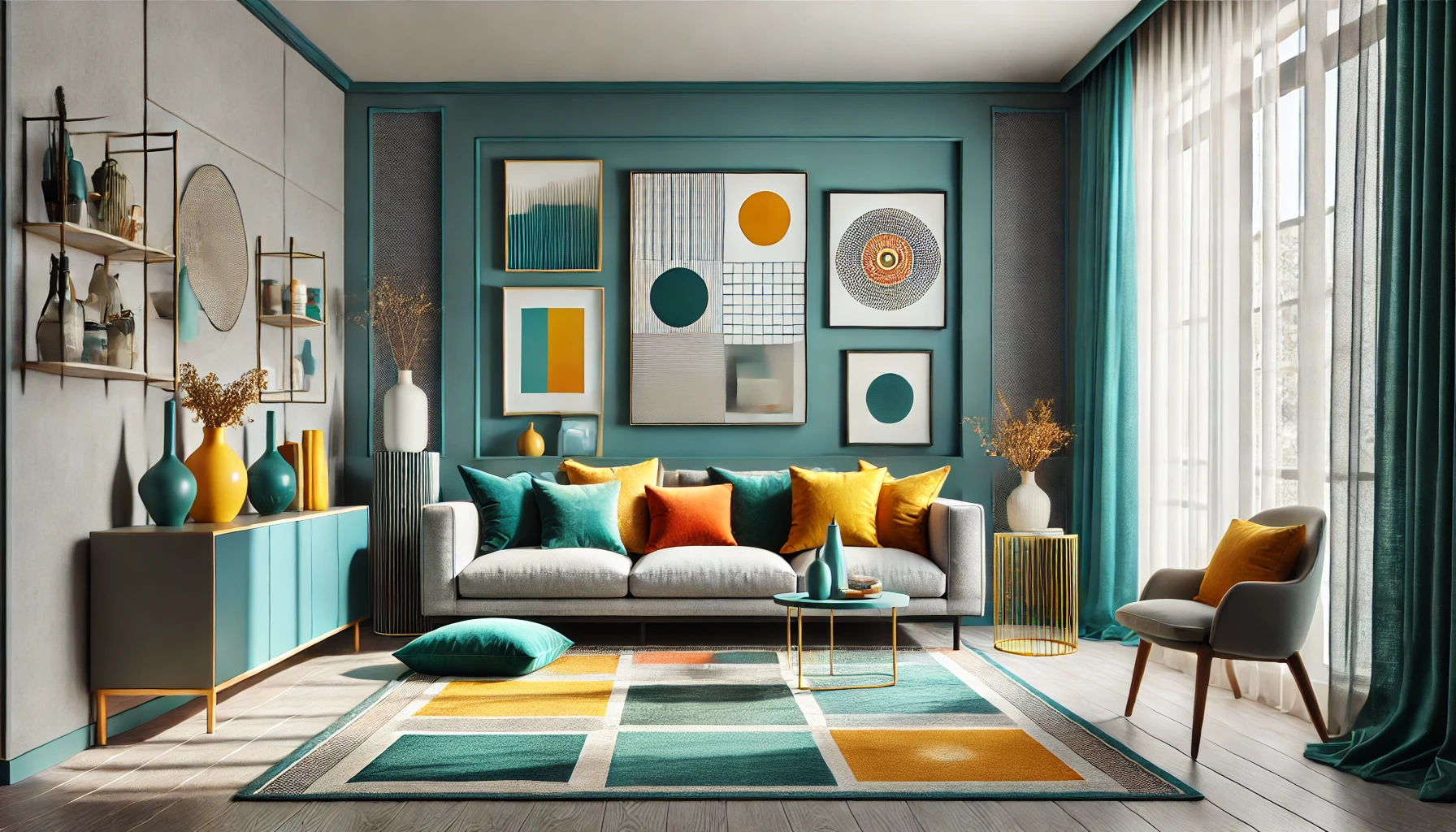Color is one of the most powerful tools in home decor. It has the ability to set the mood, create visual interest, and even influence how a space feels in terms of size and energy. Whether you prefer bold and vibrant tones or subtle and soothing shades, learning how to use color effectively can transform your living space. Here’s how you can use color to elevate your home decor.

1. Understand the Psychology of Colors
Colors evoke emotions and can significantly impact the atmosphere of a room:
- Warm Colors (Red, Orange, Yellow): Create energy and warmth, ideal for living rooms or dining areas.
- Cool Colors (Blue, Green, Purple): Promote calmness and relaxation, perfect for bedrooms or bathrooms.
- Neutral Colors (White, Gray, Beige): Provide balance and serve as a versatile backdrop for any room.
Consider the purpose of each room and choose colors that complement its function.
2. Start with a Color Palette
Before decorating, establish a cohesive color palette:
- Use the 60-30-10 Rule:
- 60% of the room’s color should come from walls or large furniture.
- 30% from secondary elements like curtains or rugs.
- 10% from accents like pillows or artwork.
- Stick to three main colors to avoid overwhelming the space.
- Use color wheel tools to find complementary or analogous color combinations.
3. Use Accent Walls for Bold Statements
An accent wall is an easy way to introduce bold colors without overpowering the room:
- Paint one wall a vibrant color like teal or mustard yellow.
- Use patterned wallpaper for texture and interest.
- Pair the accent wall with neutral furnishings to balance the look.
Accent walls draw attention and create focal points in your decor.
4. Incorporate Color Through Decor
If you’re hesitant to commit to painting, use decor items to bring color into your space:
- Add colorful throw pillows, blankets, or area rugs.
- Display vases, artwork, or books with bright hues.
- Swap out curtains or lampshades for a seasonal refresh.
Using decor for color allows flexibility and makes it easy to change your look.
5. Experiment with Layers and Textures
Combine colors with different textures to add depth:
- Use velvet cushions or knit throws for cozy vibes in darker colors.
- Incorporate glossy finishes or metallic accents for a modern touch.
- Layer rugs in complementary colors for a boho-inspired look.
Mixing textures enhances the visual interest and richness of your color scheme.
6. Let Nature Inspire Your Palette
Nature provides endless inspiration for color combinations:
- Use shades of green, brown, and beige for an earthy, grounded feel.
- Incorporate blues and whites to mimic the tranquility of the ocean.
- Add floral patterns and warm tones for a vibrant, spring-inspired look.
Natural color schemes are timeless and bring harmony to your home.
7. Use Color to Define Spaces
In open-plan layouts, colors can help differentiate areas:
- Paint a dining area a different shade to separate it from the living room.
- Use rugs or furniture in distinct colors to define boundaries.
- Add color-coded storage or decor to keep spaces organized.
This technique maintains functionality while enhancing aesthetics.
8. Balance Bold Colors with Neutrals
If you love bold colors, balance them with neutral tones to avoid overwhelming the space:
- Pair a bright orange sofa with white walls and light wood furniture.
- Use neutral rugs or curtains to tone down vibrant wall colors.
- Incorporate black accents for a dramatic and modern look.
Balancing colors ensures a cohesive and visually appealing design.
9. Use Light to Enhance Colors
Lighting affects how colors appear in your home:
- Natural light makes colors look vibrant, so observe how colors change throughout the day.
- Warm light enhances reds, oranges, and yellows, while cool light complements blues and greens.
- Use dimmers to adjust the intensity of your lighting and the way it interacts with your color scheme.
The right lighting can amplify the beauty of your chosen colors.
10. Test Before You Commit
Always test colors before making permanent changes:
- Paint small swatches on your walls and observe them under different lighting conditions.
- Bring fabric samples for furniture or curtains into the space to see how they match.
- Use temporary peel-and-stick wallpaper to experiment with patterns and colors.
Testing helps you avoid costly mistakes and ensures satisfaction with your choices.
Final Thoughts: The Power of Color in Your Home
Color is a transformative element in home decor, capable of changing the mood, style, and functionality of a space. By understanding color psychology, experimenting with textures, and carefully planning your palette, you can create a home that feels cohesive, stylish, and truly your own. Remember, decorating with color is a journey—don’t be afraid to explore and express your personality!

